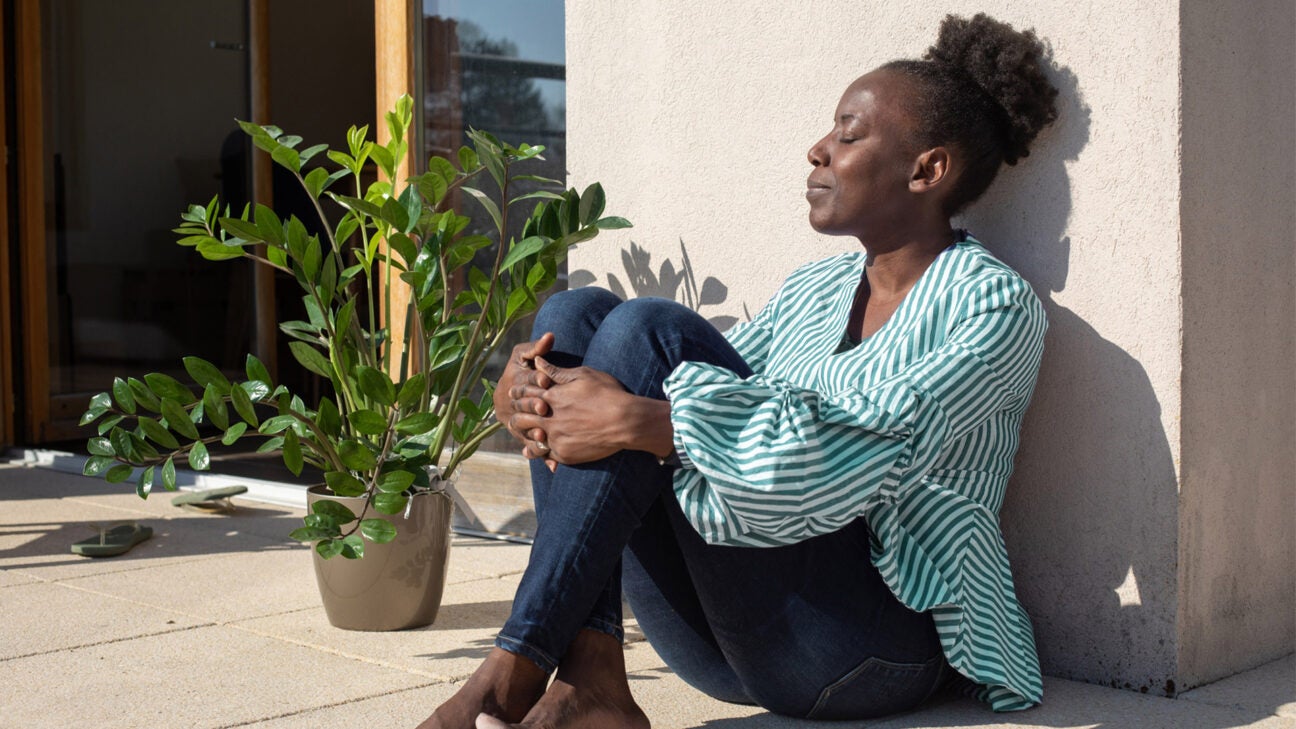
- In a new study, researchers said people who did short daily breathing exercises significantly reduced their blood pressure.
- The participants used equipment that provided some resistance while they did their breathing.
- Experts say utilizing daily breathing techniques can provide a number of health benefits.
- They add that lifestyle factors such as diet and exercise are also important.
Using breathing techniques for 5 to 10 minutes a day might help lower blood pressure, according to a study completed at the University of Colorado, Boulder, and the University of Arizona.
In their study, researchers instructed participants to complete breathing exercises for 5 to 10 minutes daily using a breathing device. The participants were told to take 30 breaths as the machine provided resistance, so their respiratory muscles worked harder. The trial lasted six weeks.
Within two weeks of using the device, the researchers said they noticed improvements in blood pressure. The only side effects noted were temporary sore muscles and lightheadedness.
By the end of the six weeks, participants had an average decrease of 9mmHg in systolic blood pressure.
“A nine-point decrease in systolic blood pressure is tremendous,” Dr. Rigved Tadwalkar, a cardiologist at Providence Saint John’s Health Center in California, told Healthline. “While we have long known that deep breathing exercises can contribute to lowering blood pressure, it is surprising to learn of such a vigorous effect when adding resistance.”
Researchers said the results were as effective as taking blood pressure medication and possibly more effective than lifestyle changes, such as losing weight or reducing salt in your diet.
“As a reference, exercising is expected to reduce systolic blood pressure by approximately 5 to 8 mmHg,” explained Dr. Jim Liu, a cardiologist and clinical assistant professor of internal medicine at The Ohio State University Wexner Medical Center. “Sticking to a heart-healthy diet can decrease it by approximately 11 mmHg.”
“Hypertension is classified into different stages, with stage 1 including systolic between 130 to 139 mmHg and stage 2 including [greater than] 140 mmHg systolic,” Liu told Healthline. “Treatment differs depending on the stage. Therefore, a decrease in 9 mmHg may be the difference between having to take versus not taking blood pressure medications.”
Potential long-lasting benefits
When participants tried the breath training for six weeks, then stopped for six weeks, their blood pressure remained almost as low as right after the training period.
The study results were as of the end of the trial. Still, the researchers noted that blood pressure could continue to improve with long-term use.
Young, healthy participants also benefitted from using the device.
Researchers said improving the strength of the diaphragm and other breathing muscles is not what caused the drop in blood pressure.
“We think the large, forceful breaths done with respiratory muscle strength training device likely lower sympathetic activity (the fight or flight response), which tends to be overactive in people with higher blood pressure,” said Daniel Craighead, lead author of the study and an assistant research professional in the Integrative Physiology of Aging Lab at the University of Colorado School of Integrative Physiology.
“We also think it improves the health of our blood vessels, which are critically important for preventing cardiovascular diseases,” he told Healthline.
The importance of breathing
How you breathe can also influence blood pressure.
“Slow, deep breathing can help lower blood pressure without medications,” said Rachel MacPherson, a certified personal trainer and nutrition coach. “If your doctor has approved this method for helping you control your blood pressure, using a deep breathing device may help. The [Food and Drug Administration] approved some of these devices to slow breathing and heart rate.”
“Some of these devices were originally developed for people with serious lung conditions, but further research on those with high blood pressure has found them useful for reducing it,” MacPherson told Healthline. “The devices regulate your breathing or help you strengthen your breathing muscles and improve blood vessel function. They also increase the amount of nitric oxide, which widens your arteries for better blood flow and lower blood pressure.”
According to Craighead, the device used in the study was the Powerbreathe K3, which retails for $500. As part of his disclosure, Craighead told Healthline that Powerbreathe provided a research discount for the device but had no other involvement in the study. The National Institutes of Health funded the research.
“There are many different devices available online. Our research involved performing inspirations against very high resistance, so it’s most important that people look for a device with a high maximal resistance setting (the cheapest devices provide only low levels of resistance to inspiration, which can’t mimic our protocol),” explained Craighead. “I recommend people look for a device with a maximal inspiratory resistance setting of at least 100 cmH2O. I also recommend people consult with their doctor before starting inspiratory muscle strength training to ensure it’s safe for them.”
Managing high blood pressure
“Managing blood pressure is a combination of lifestyle measures and medications, depending on how high it is,” said Liu. “If someone’s blood pressure is just slightly above goal, lifestyle changes might be enough to treat it.”
Tadwalkar suggests the following lifestyle measures:
- Be physically active
- Dietary changes that include reducing sodium intake and increasing potassium-rich foods, including certain greens, fruits, and yogurt
- Quit smoking
- Minimize consumption of alcoholic beverages
- Engage in stress management, such as meditation, yoga, mindfulness, biofeedback, Qigong, and Tai-Chi
“There are also a large variety of blood pressure prescription medications,” added Tadwalkar. “Common medication classes are angiotensin-converting enzyme (ACE) inhibitors, angiotensin receptor blockers (ARBs), calcium channel blockers, and diuretics. Depending on an individual’s clinical situation, a physician may prescribe drugs from other classes, including beta-blockers, vasodilators, or alpha-blockers. However, sometimes, it is clear a person needs blood pressure medications. But, we nearly always emphasize lifestyle measures before discussing pharmacologic therapies.”
How Daily Breathing Exercises Can Help Lower Blood Pressure as Much as Medication
Source: Pinoy Lang Sakalam



0 (mga) komento:
Mag-post ng isang Komento